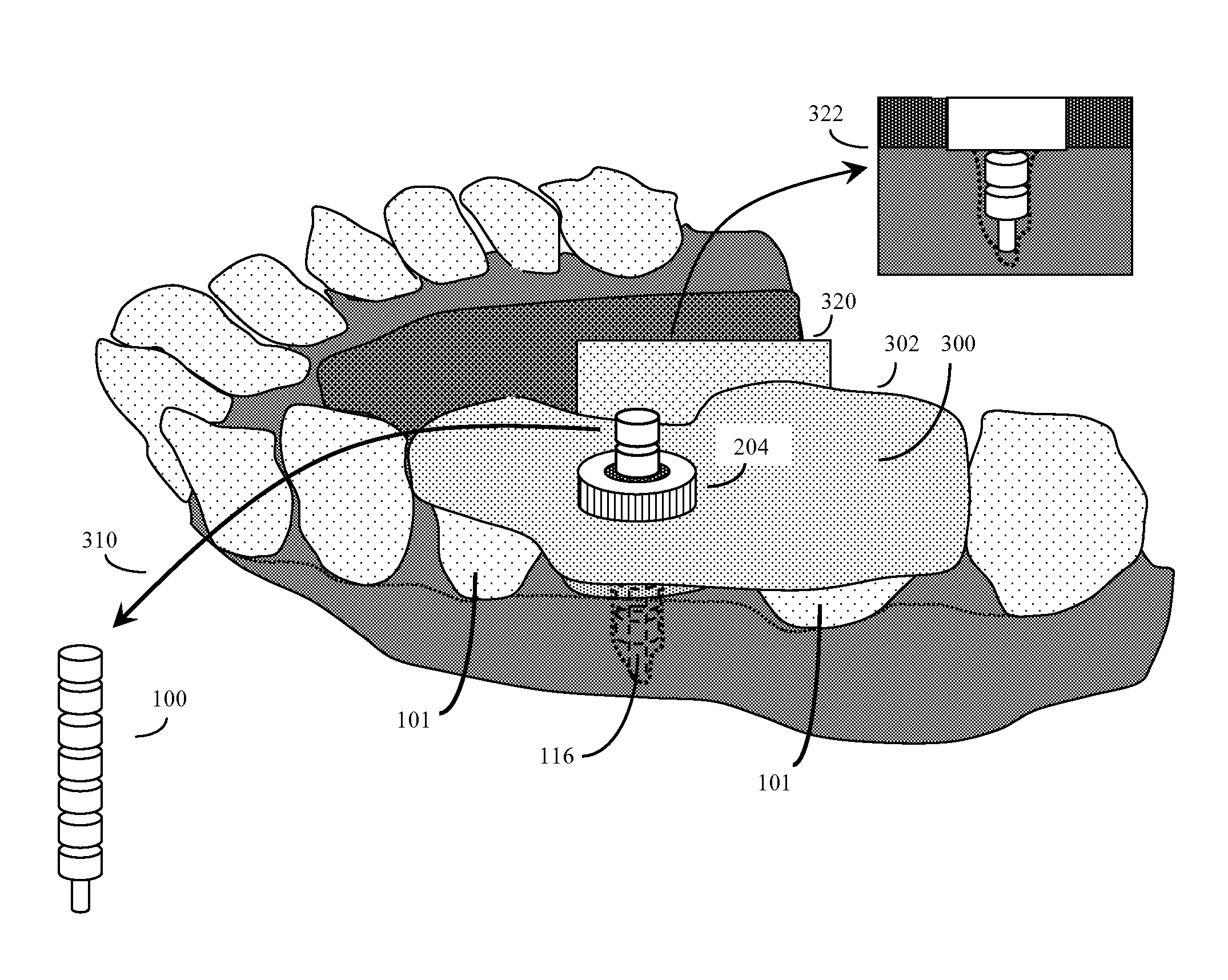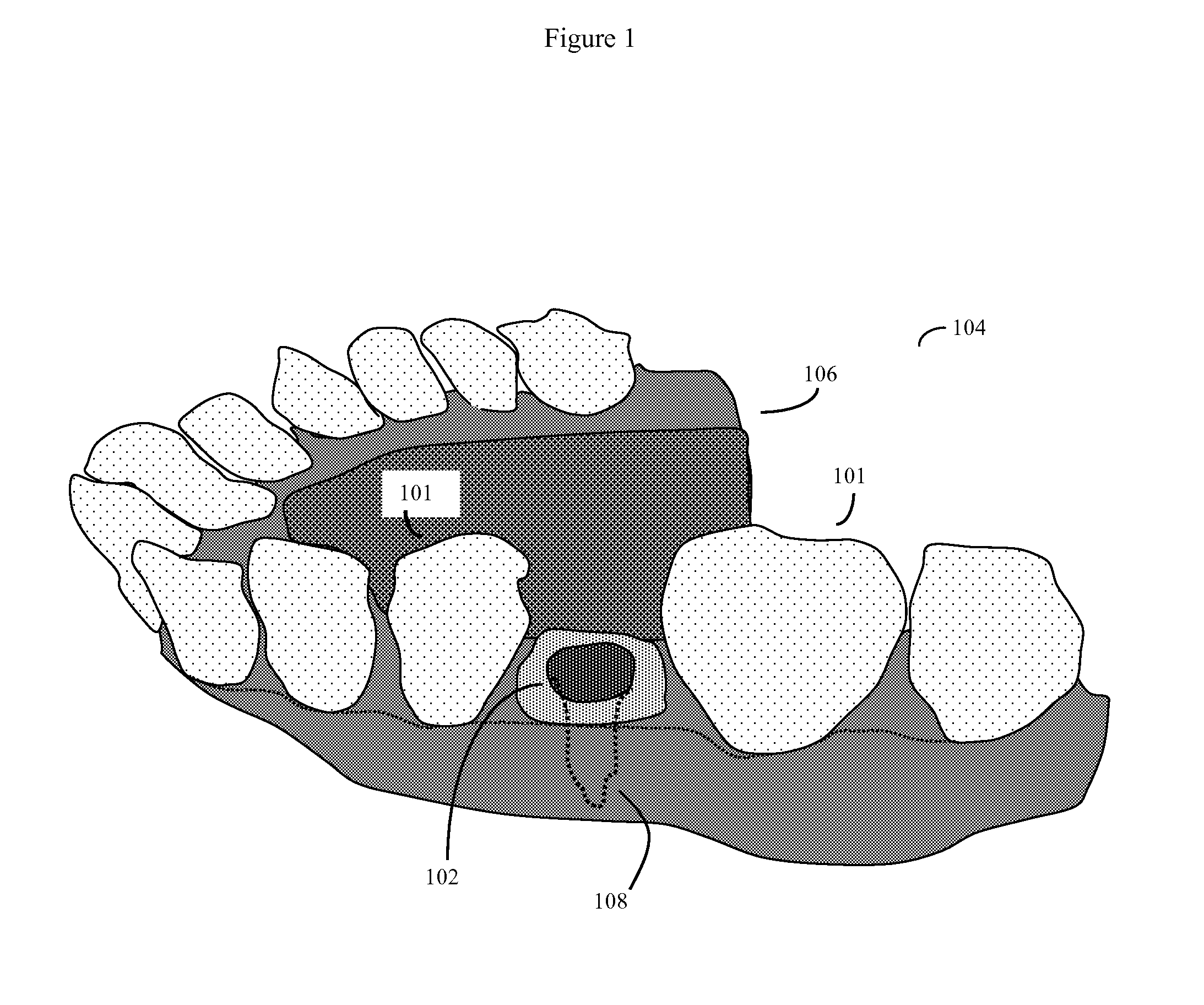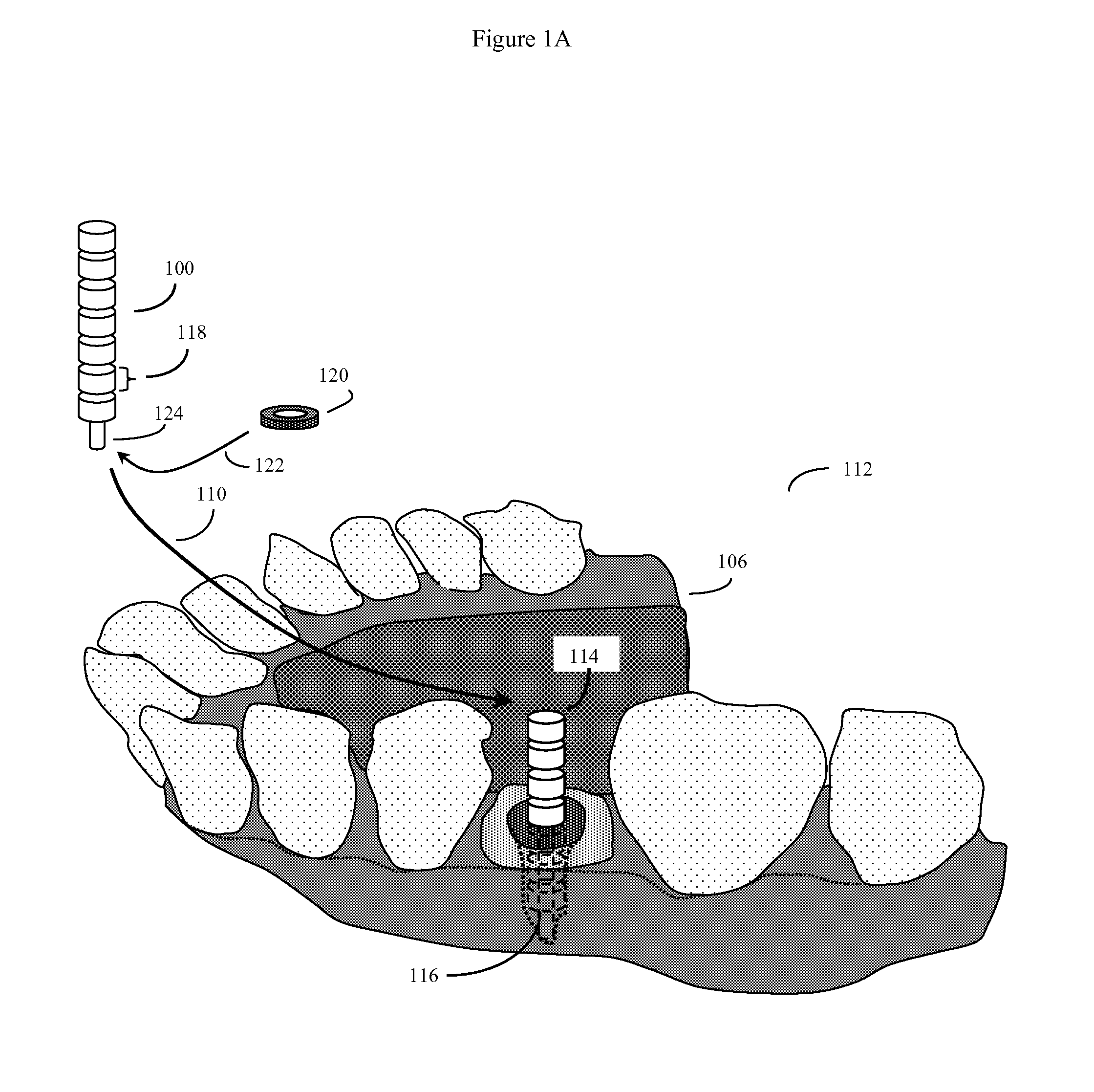Method and kit for producing dental implant drilling guides
a technology for dental implants and drilling guides, applied in the field of dental implants and methods and kits, can solve the problems of complex and risky implant installation, difficult work of lower jaw bones, and easy accidental drilling into sinus regions, so as to achieve quick production of implant drilling guides and avoid critical structures
- Summary
- Abstract
- Description
- Claims
- Application Information
AI Technical Summary
Benefits of technology
Problems solved by technology
Method used
Image
Examples
Embodiment Construction
[0029]In one embodiment, the invention may be a method of aligning a dental implant based upon the position and depth of the natural tooth socket at the time of tooth extraction. The invention may also be a kit of components to accomplish this method. The method will generally comprise or at least start by extracting a tooth from the jaw of a human patient. This patient will generally have a fair number of other teeth, usually including other teeth reasonably adjacent to the empty tooth socket left in the patient's jaw, after the tooth has been extracted.
[0030]According to the method, the practitioner will obtain a post (often made of a radioopaque material such as aluminum, and often generally cylindrical in configuration). This post will generally have length and width (e.g. diameter) dimensions that will allow the post to penetrate substantially to the bottom of the empty tooth socket (i.e. at or near the bottom of the tooth root socket). The practitioner will then position the p...
PUM
 Login to View More
Login to View More Abstract
Description
Claims
Application Information
 Login to View More
Login to View More - R&D
- Intellectual Property
- Life Sciences
- Materials
- Tech Scout
- Unparalleled Data Quality
- Higher Quality Content
- 60% Fewer Hallucinations
Browse by: Latest US Patents, China's latest patents, Technical Efficacy Thesaurus, Application Domain, Technology Topic, Popular Technical Reports.
© 2025 PatSnap. All rights reserved.Legal|Privacy policy|Modern Slavery Act Transparency Statement|Sitemap|About US| Contact US: help@patsnap.com



